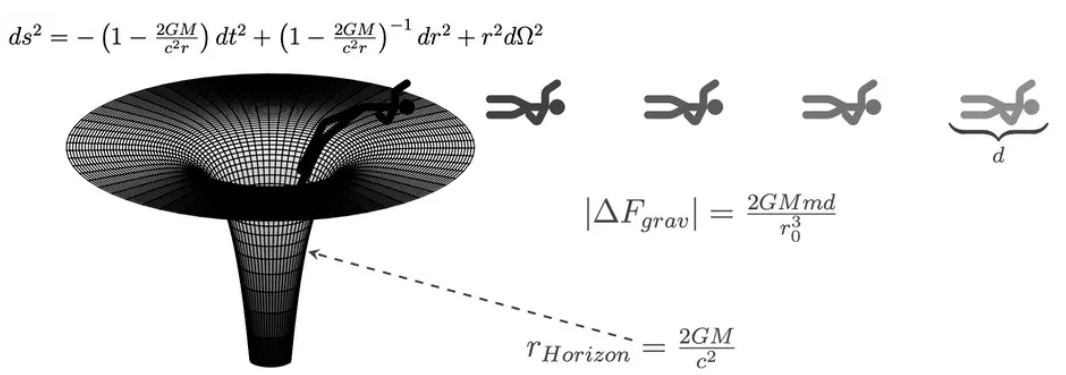Humans could safely enter black holes but it would be a terrifying, one-way trip
A pair of physicists have proposed the exact set of circumstances necessary for a human to enter a black hole, but caution that it would be the loneliest one-way trip ever undertaken in the history of mankind.
For the purposes of their proposal, Leo and Shanshan Rodriquez, both assistant professors of physics at Grinnell College, compared two types of black hole: stellar-sized, with roughly the same mass as our sun, and supermassive, with a mass millions or even billions of times larger.
The former does not rotate, with an event horizon radius of approximately two miles (3.2km). The event horizon is the point of no return where the gravitational or tidal forces of the black hole become so powerful that not even light can escape.

By contrast, supermassive black holes like the one at the center of the Milky Way galaxy can measure up to and beyond four million solar masses, with an event horizon radius of 7.3 million miles.
In the case of a stellar-sized black hole, the event horizon is far closer to its center than a supermassive black hole, meaning that the difference in terms of gravitational pull between the event horizon and its center is somewhere in the region of 1,000 billion times.
Also on rt.com Black holes can grow ‘hair’ when spinning fast enough in dramatic extension of Einstein’s theory of gravityIf a person were to cross the event horizon of a stellar-sized black hole, they would undergo a process known as spaghettification, in which all the atoms of their body would be stretched out in a long thing strand given the extraordinary difference in gravitational pull from one point in spacetime to the next. It is highly likely that this process would kill the intrepid astronaut.
However, a person falling into a supermassive black hole would experience a much more gradual and protracted freefall without the unsightly spaghettification, passing through the event horizon unaffected by extreme differences in gravity given the staggering distances involved.

One other obstacle stands in the way of this extreme freefall though; most black holes have extremely hot accretion discs of superheated material ripped from the universe around them which is being crushed together on their doorstep.
In order for a human to “safely” enter a supermassive black hole, it would need to be isolated from the universe around it, having chowed down on planets, gas and stars around it long before the intrepid astronaut dared to approach the event horizon.
Alas, surviving the journey past the event horizon would be the most lonely and personal voyage ever undertaken, as no information can possibly escape the black hole, given the aforementioned gravitational tidal forces which light itself cannot escape.
Also on rt.com Earth 2,000 light years CLOSER to supermassive black hole & moving FASTER than previously thought – astronomersThink your friends would be interested? Share this story!















